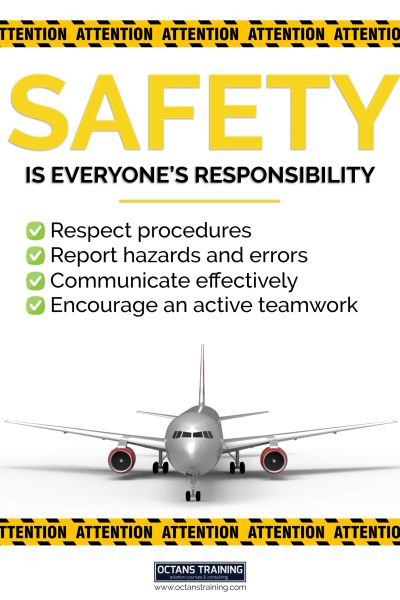
4 basic principles of safety management
- Posted by Octavian Naframita
- Categories Safety Management System
What are the four basic principles of safety management?
The 4 basic principles of safety management are also called the “Four Pillars” of safety management. These four basic principles (a total of 12 elements) provide a framework for effectively managing safety in the aviation industry. According to ICAO Annex 19, they are:

1. Safety policy and objectives
1.1 Management commitment
1.2 Safety accountability and responsibilities
1.3 Appointment of key safety personnel
1.4 Coordination of emergency response planning
1.5 SMS documentation
The first principle reiterates the importance of having a clear safety policy and dedicated commitment to safety. First of all, it relates to establishing a safety policy that highlights the entity’s commitment to safety, assigns roles and responsibilities, and sets the safety objectives. Strong leadership ensures that safety is integrated into the organization’s culture and decision-making processes.
2. Safety risk management
2.1 Hazard identification
2.2 Safety risk assessment and mitigation
The second pillar from the 4 basic principles of safety management, focuses on proactive identification and managing safety risks within an the company. It involves conducting regular hazard identification, and risk assessment and mitigation strategies. This aspect relates to developing procedures, protocols, or mitigation actions to address potential safety issues and negative results.
3. Safety assurance
3.1 Safety performance monitoring and measurement
3.2 The management of change
3.3 Continuous improvement of the SMS
The third principle is all about monitoring and evaluating safety performance. Regularly measuring Safety Performance Indicators allows Companies to assess their safety efforts’ effectiveness. This is one of the basic difference between Quality Assurance and Safety Assurance. SMS focuses on safety performance.
4. Safety promotion
4.1 Training and education
4.2 Safety communication
The final principle involves putting safety plans into action. This includes allocating resources, providing appropriate training, and creating a structure that supports safety responsibilities. Effective implementation also requires communication and engagement across all levels of the organization, promoting a safety-conscious culture.
You may also like

SAFETY STANDARD

SMS Meaning


